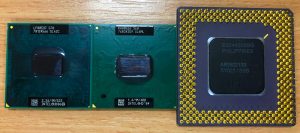
For most of our lives, we have been sure that technology would advance, become cheaper, faster, and better than the day before. However, we may be going in a different direction. In 1965 Gordon Moore, one of the founders of Intel, predicted that within every two years the number of components in an integrated chip would double. He was proven correct in 1975 when the number of components reached an astonishing 65,000. He revised his prediction to the number of transistors doubling every two years; this became known as Moore’s Law. Since then, his predictions defined the trajectory of technology for decades to come.
Moore argued that theoretically the more transistors a chip has, the cheaper the chips become. This birthed all sorts of innovations and advances in technology such as allowing machine-learning techniques to work through massive amounts of data to find specific answers. In 1960, integrated chips had about 10 transistors that were about 80 microns wide. Today, chips have about 10 million transistors that are as small as 10 nano microns. These chips have advanced in just 5 decades giving us much faster performances.
Due to the laws of physics, it’s getting increasingly harder and harder to create smaller transistors. In 2002, there were 25 companies with plans of making the next generation of chips, but now it’s down to three. It took Intel 5 years to switch from a 14 nano micron chip to a 10 nano micron chip; it seems like the prediction is declining and will reach its end soon. Many fear that the next generation chips will be designed for specific applications. For example, Deep Learning and other AI applications rely on GPUs. Companies like Google, Microsoft, and Baidu are creating their own chips for their own needs. Deep Learning and other AI applications tend to use a lot of computer power so specialized chips can greatly speed up its performances.
We have seen technology leap within decades. Just because Moore’s prediction seems to be coming to an end doesn’t mean that we will be stuck with our current processors. Engineers are working to create chips as small as 5 and even 3 nano microns. It is assumed to be released within a few years.